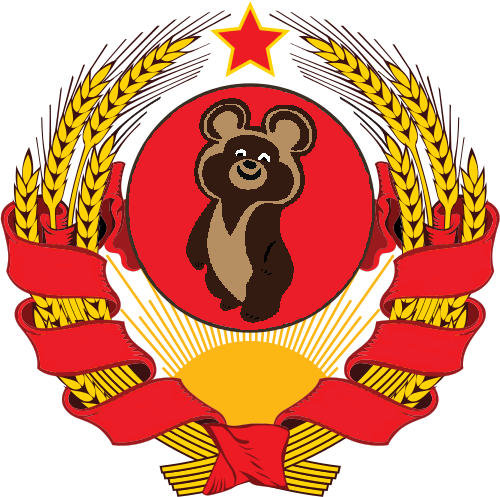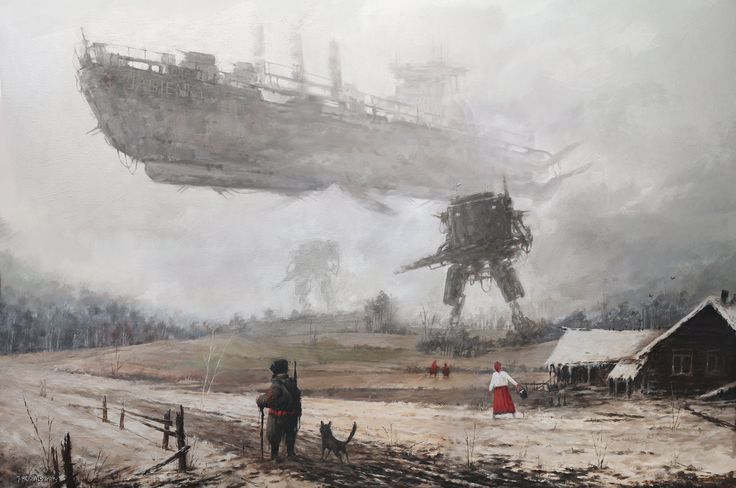Mishalan

|
|
| Feudal Status: | Autonomous Republic |
| Capital: | Mishagrad |
| Largest Cities: | Old Mishalan, Vena, Jeanezville |
|
| |
| Local Leadership Title: | General Secretary |
| Local Government: | Communist |
| Current leader: | Vladimir Medvedev |
|
| |
| Local language: | Russian |
| Local Religion: | Atheist |
Mishalan is a region in Benacia, corresponding to several former territories and tied to Amokolia for much of its long history. Its most recent form as a communist state took root around 5000 ASC. The borders of the original Mishalan once extended all the way to the northern shores of Benacia. More recently however the territory has come to encompass central Benacia and the delta of the western branch of the River Elwynn, extending south into Shireroth's Transelwynn Territory.
Contents
Etymology and terminology
The name Mishalan has its origins in the local Benacian population and scholars suggest its roots originate in the Bjorngarder population to the north, which shares a similar bear-centric culture. Misha itself is a diminutive form of bear in the local language, and therefore the name Mishalan itself means "land of the bears". It is an accurate description given the long history of bear husbandry the Mishalanski exhibit and, to this day, still regularly practice.
History
Ancient History
The region now known as Mishalan has been inhabited, although not necessarily developed, since the earliest recorded times around 0 ASC. The first power to exert influence over the region was Shireroth, thus intertwining its fate with the area forevermore. Yet the western banks of the River Elwynn came under control of Machiavellia, one of the earliest powers of Benacia and an important co-founder of Tymaria. Jason Rhode, Prince of Machiavellia, became a prominent Tymarian up until the TYSOG Incident caused the collapse of that state, resulting in a domino effect that utterly crushed the Machiavellians. The region remained anarchic until the formation of Europia Concordiae, more commonly referred to as Concordia. The eponymous city of Concord was founded northwest of Old Mishalan on the Concordiae Plateau. The Concordians were the first to develop the region of Mishalan, and like later settlers were said to have originated from Hyperborea. Yet their civilization did not last long, and soon passed to invading armies from war-like Keltian state of Varja. Though the Varjans, having overextended themselves, soon lost control of the area and it devolved once again into an anarchic state that would last several centuries.
Around 2300 ASC the area came under the influence of that great conglomeration of nations known as the Confederacy of Independent States, and within that alliance under the jurisdiction of Gaia. The CIS held sway over the region until the late 2500s, but did little to develop the area, hindered in part by the environmentally-minded Gaians. After the collapse of the CIS the area once again fell into anarchy, with petty states constantly fighting and bickering. Around 2700 the Amokolians first began to appear on Lesser Automatica, though they would not begin to exercise control over Mishalan for another five-hundred years. The Amokolians would eventually begin to migrate to the Benacian mainland, settling along the river and moving southward over time. This would lead to the founding of Mishalan.
The Amokolian Era
Mishalan was originally founded by Jess Heimer as a subdivision of Amokolia, then an independent micronation, around 3184 ASC (April 2008). Amokolia itself went through numerous different phases of government, often switching from a monarchy to a republic and back again. Originally Amokolia's Benacian territories consisted of three provinces, Oleslaad, Vattnaland, and Mishalan, but by 5021 ASC Mishalan dominated the Benacian lands and formed Greater Mishalan. This also marked the start of communist government in Mishalan and the formation of a Soviet Republic. This was mostly the result of encroachment by Elwynn, which at the same time had begun to expand into the surrounding areas vacated by Amokolia, such as Lun Ezkaron, Araxion and Iserdia. Although a conflict was averted, a Cold War persisted and the Imperial government of Shireroth was viewed with enmity, encouraging greater support for the leftist government of Mishalan. At this time Amokolia became a protectorate of Natopia, which had much more lax governmental regulation and allowed the socialist government of Mishalan to function with significant autonomy.
The area briefly passed to Shireroth around 5487 ASC, which held onto northern portions of Amokolia along the Benacian coast. The southern portion - including the core of Mishalan - then passed to a resurgent Kingdom of Amokolia, around 5567. Under the tyrant King Jean the monarchy violently suppressed the Mishalanski. This resulted in the large-scale migration of people from Mishalan into Shireroth's Transelwynn Territory. Under provisions made possible by Kaiseress Kizzy, the Mishalanski settled along the banks of the River Elwynn and founded the city of Mishagrad, forming a government-in-exile and a new district within the Transelwynn.
A resurgence of the Cabbage Plague in Amokolia and the resulting death of the tyrant King Jean in 5968 ASC, the way was paved for the Mishalanski government-in-exile to resume control of their historic homeland. This was met however with renewed hostility from Elwynn, which also sought to exert control over the vacated Amokolian lands. Although both entities were subjects of the Kaiser, who actually held power over the territory resulted in a renewed Cold War between Mishalan and Elwynn. At present neither power recognizes the respective opposing claim over the region.
Government
Mishalan is a left-wing communist state administered by a Soviet (council) composed of elected ministers and chaired by a General Secretary. Since Mishalan is not geographically large, the state is divided into communes centered around major cities. These communes elect a minister to sit on the Soviet, which then elects the General Secretary from among that body.
Culture
When Amokolia first exerted control over its Benacian territories they laid claim to a long portion of the northern coast that was once a part of Bjorngard, a territory populated by Cimmerians and Raikothians. Bjorngard was founded as a vanguard of the Hyperboreans when they first made expeditions into the Benacian wilderness many centuries ago. These virile warriors were faced with dense coniferous forests populated by hostile natives. Establishing a foothold was an extremely difficult task, and required innovation on the part of the pioneers. Thus it came as little surprise that they came to utilize the tools on hand; this being a prolific population of bears. Finding them trainable, the settlers embarked upon a unique form of animal husbandry, training the bears as beasts of burden, mounts, and military companions. With little other native fauna capable of serving the tasks put to the hardy bears, they became significantly interdependent. Over time the bears took on symbolic importance and eventually led to the area being known as Bjorngard (Bear Guard).
When the Amokolians came, the remnants of Bjorngarder culture were adopted by the Mishalanski. While the Bjorngarders emphasized a relationship with polar bears, the Mishalanski, who settled further south, adopted the Benacian brown bear (Ursus arctos arctos) as their totem animal. It was the Mishalanski that perfected the art of bear cavalry and of utilizing bears in battle, however it wasn't until the communist regime took power that the bear became a national symbol. Most commonly the Benacian brown bear is represented by the diminutive caricature of Misha, the national personification of the Mishalanski (e.g. like Columbia serves as the personification of the United States). To this day, pet bears are a common sight in most Mishalanski homes.
Economy
Located in the central highlands of Benacia, Mishalan has access to significant quantities of mineral ore. The mining industry has in turn helped to provide Mishalan with a large industrial base for producing iron, steel, and other metals. Closer to the River Elwynn, the waterway itself provides power and transportation. The banks of the river are also extremely fertile, and the Mishalan Valley is well known for its many farms - indeed, it is often called the Breadbasket of Mishalan.
As a collectivized state, all production is considered a public asset, and produced goods are redistributed equally to all Mishalanski. Excess goods are then either placed in storage for emergencies, or exported for profits that can be used to purchase goods that cannot be produced locally.
Military
The Armed Forces of the Soviet Republic is the official title given to Mishalan's defense forces. It is also unofficially called the Red Army. The Red Army is noted for making heavy use of bear cavalry, at least prior to the use of mechanized units. Bolstered by local defense industry giant Red Bear LLC, the armed forces has developed from early industrial level technology to mechanized robotics within a very short period, creating something of a clash of cultures but nonetheless effecting a deadly military. All able-bodied citizens are required to serve a two-year tour in one branch of the armed forces, and once discharged are placed on a reserve list until the age of thirty. This has allowed Mishalan to significantly bolster its armed forces to staggering numbers - an advantage that has helped to steer would-be invaders away from the country. While rather primitive in design, many of the new mechanized units, often powered by steam or coal and run by clockwork gearing, are much more efficient in battle than traditional mounted units. Even so, the use of bear cavalry has become such an important tradition, and often intimidating towards enemies, that a large contingent of riders still remain in active duty.
The development of industrialization and steam power, fueled by the innovation and hard work of the Soviet, has led to breakthrough technologies. This new science has allowed the state armament manufacturer - Read Bear LLC - to produce advanced weapons in defense of the motherland. The most intimidating of these defenses has been the creation of the flying armada, a series of airships modeled after traditional ocean ships. The development of clockwork robotics has also allowed for the construction of mechanized infantry, more commonly called mechs, which are mechanical suits piloted by soldiers and often armed with an array of weapons, such as heavy cannon or a gatling gun. These developments have given the Red Army a reputation on the battlefield as an advanced and powerful military, despite its diminutive size.
Geography
Mishalan is located in mountainous central Benacia and is mostly at higher elevations than the surrounding countries. Even the West Elwynn is at a higher altitude due to being very close to its source in the mountains. Only south of the Staraya Plateau does the elevation drop as one enters the Mishalan Valley and the Transelwynn. Most of the country is dominated by coniferous forest, and the timber is an important resource, both in terms of material and environmental value.



